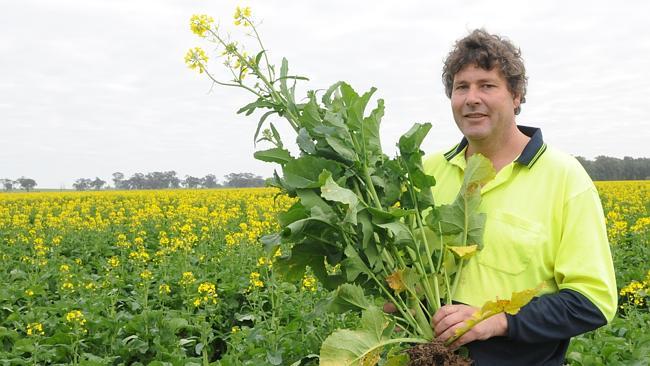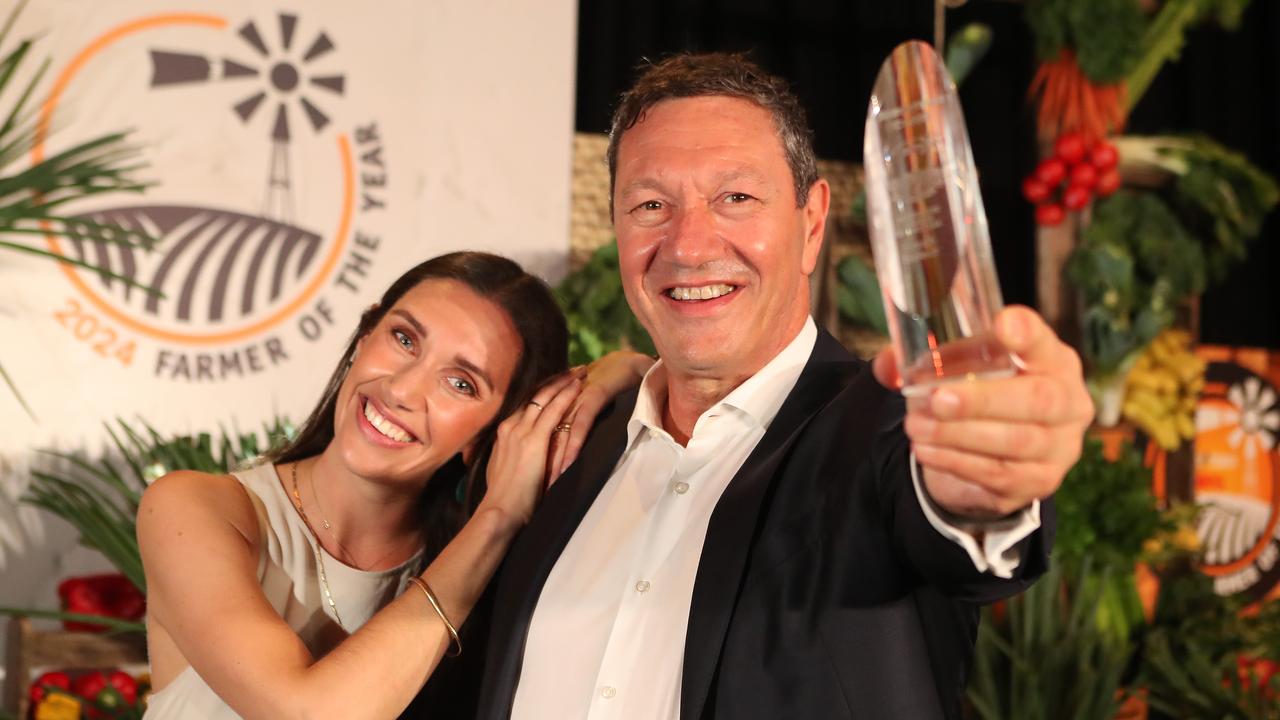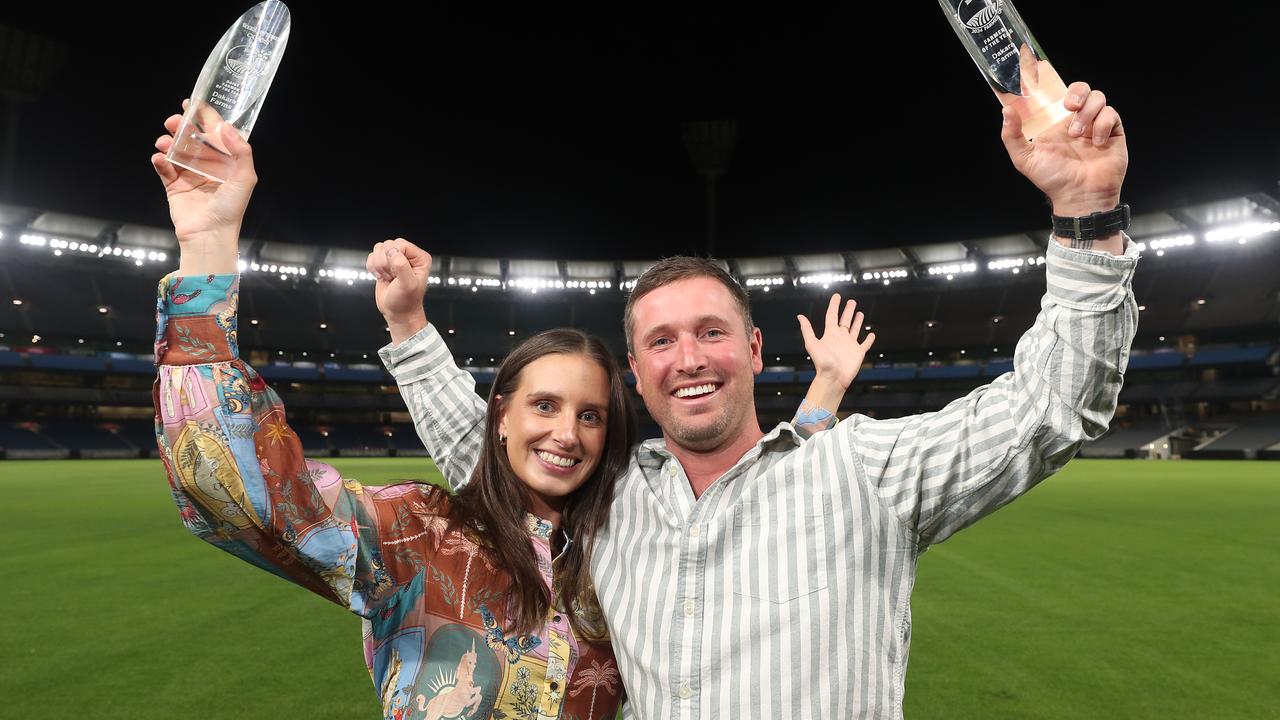Yarrawonga farmers the Inchbold family combine crops, hay and cattle
ONE farming enterprise in northern Victoria has used a crop of strategies to make their business successful.

ONE farming enterprise in northern Victoria has used a crop of strategies to make their business successful.
And in an area renowned for cereals and sheep, the Inchbold family has included hay and cattle into their mix on their farms near Yarrawonga.
Adam Inchbold is the fifth generation to farm in the district, and with recent acquisitions, now runs more than 3000ha of country predominantly at Yarrawonga and Mulwala with his wife Ingrid and in conjunction with his parents Richard and Dorothy.
This is a family not afraid of thinking outside the square, to try new technology to make sure their farming enterprises sing.
Adam said his father Richard and grandfather Harvey, were some of the first in the district to use direct drilling, adopting the sowing method in the late 1970s.
“This was a time when cultivation was the ‘norm’ and dad and his father used direct drilling and in those early years, it didn’t always go well,” Adam said.
“But you have to be continuing to change if you want to stay ahead in this industry.”
It’s this lateral thinking that sees a mix of crops grown on the Inchbold’s country, including the regular wheat and canola crops.
Built into their mix is oaten hay, produced for both the export and domestic markets.
It’s not something that many in the district would include in their rotations, but Adam said it had been a lynch pin in the profitability of their operation in the past 15 years.
“In that time, oaten hay has been the standout performer,” he said.
“In the dry years, of course, it’s not as much of a worry (a real drought will still reduce hay yields, especially the later sown crops) if you don’t get good spring rains as you don’t need to worry about grain fill.
“And you also don’t need to worry about frost damage.”
Their Winteroo oat crops usually produce about eight to 10 tonnes/ha, with the highest quality going to the export market, some of which heads to Japan.
“They want good colour and good sugar levels and Winteroo has been a consistent performer,” Adam said.
The Inchbolds also like the rotational benefits of growing oaten hay, and while they had oats or canola as a break crop in past rotations, backed up at each end with wheat, they will now run a wheat:oats:canola: wheat rotation to help with ryegrass resistance.
They have planted about 500ha of oats for hay this year, with the remaining 2000ha planted to a mix of wheat, canola and barley. About 500 ha is dryland lucerne that is rotated every five years or so.
There are four wheat varieties — Wedgetail (sown due to the early break), Suntop, Cobra and Young — and Adam said this was probably one too many.
“I’d prefer to be growing three varieties and we will narrow it down to three next year,” he said.
Adam freely admits he likes technology and the ability to fine tune crop growing.
But not all technology is appropriate to northern Victoria and some he thinks is overrated.
One that does stack up is precision agriculture.
Variable rate fertiliser application is a big plus already, Adam said, but will become more important when input costs rise.
“In a good season, you don’t see such big benefits as the yield maps are more even,” Adam said.
“But in a dry season, where there is limited money to spend, you can reward (fertilise) the parts of the paddock which are working well.”
Adam said he was surprised the uptake of precision agriculture had been so low in the district.
But is a fan of using it.
He will go the next step this spring and use sensors fitted to the spraying unit to detect potential in his crops, and allow him to work out where late season nitrogen will be applied.
In contrast, Adam is not a huge fan of full-on controlled traffic for northern Victoria, and believes setting up farming equipment to be able to use controlled traffic could be overcapitalising.
“You can spend hundreds of thousands of dollars setting up all the equipment for controlled traffic, and I just don’t think it’s an absolute must,” he said.
“I do think tramline (continually using the same wheel paths in the paddock in crop) is important but I’m just not so sold on controlled traffic for duplex soils. I have not seen any objective results showing the benefits of the system in our environment.”
Whatever methods they are using, it seems like the Inchbolds have got the mix of technology and management right.
If there are “normal” spring rains, they should achieve yields of 5t/ha for their wheat and up to 2.8t/ha for their canola.
And they have a clever risk management strategy in place for years where a spring frost can cause heartache to grain growers, or a spring rain can spell disaster for hay crops.
The Inchbolds run a 1000-head cattle feedlot, and any secondary quality grain or hay, as well as straw from their cereal crops, is used in that operation.
But this is run as a separate entity, and grain or hay is simply not kept aside to keep the feedlot running.
Business decisions are made, and that has meant the Inchbolds are buying in grain at the moment to finish cattle, even though they sold their own grain earlier this year.
And recently they have tried their hand at irrigation.
They re-use the treated sewerage water from Yarrawonga to irrigate about 55ha, set up with sub surface irrigation.
This is used to double crop, with the rotation currently faba beans followed by a maize crop for silage.
Adam said he liked the diversification of the family’s farming operation.
Growing hay is not that common for major croppers, and neither is running a feedlot.
But it’s a mix that keeps farm labour employed all year round and supplies a diverse and steady stream of income.
“We believe we are not as exposed to risk having a number of enterprises and the ability to use grain and hay that does not reach the quality standards,” Adam said.
“We are comfortable with what we are doing but we will always be looking at new technology and keeping our minds open.”


